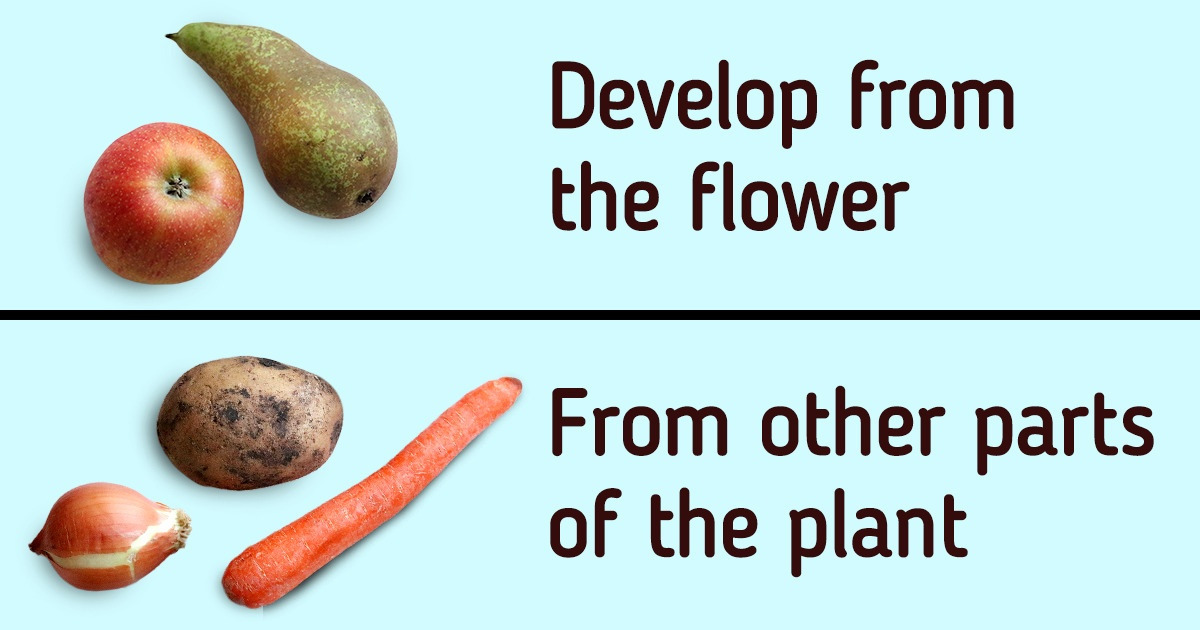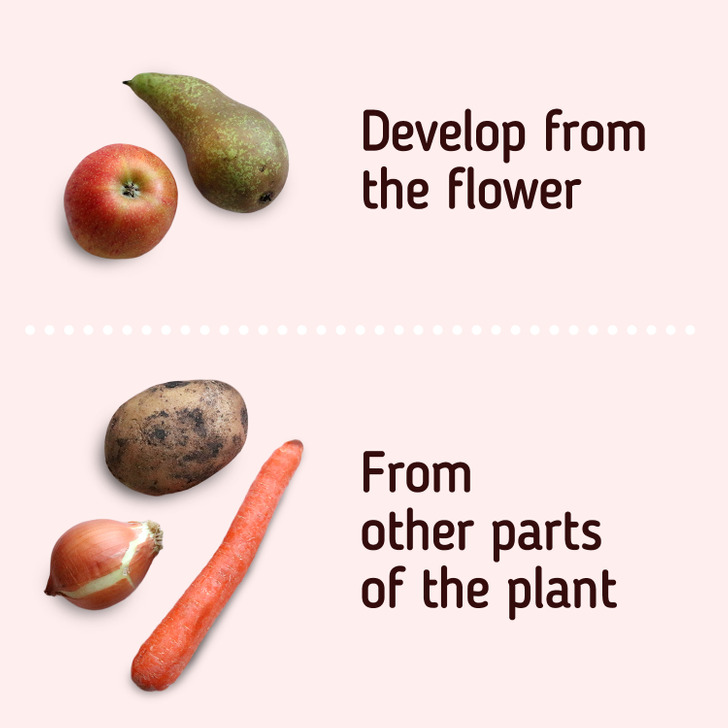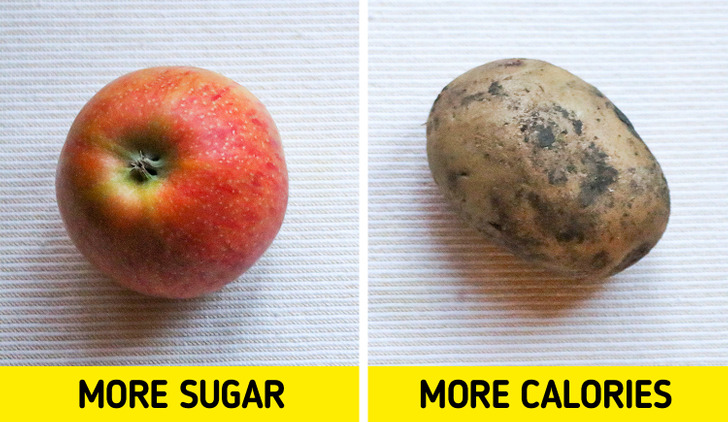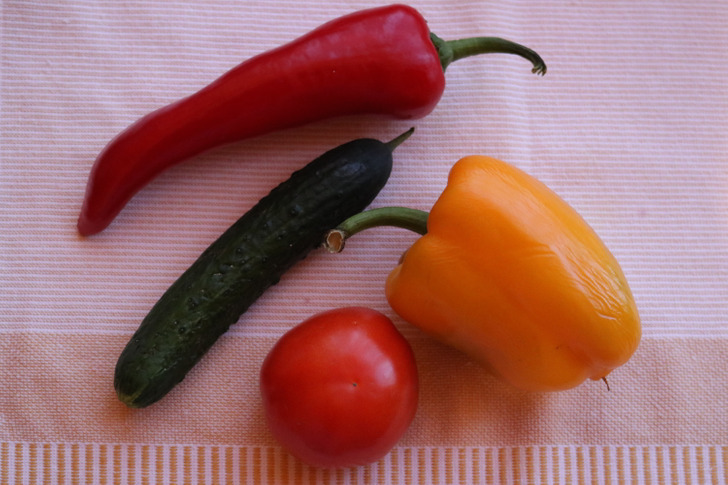What the Differences Between Fruits and Vegetables Are

We all know from childhood that carrots and potatoes are vegetables, while apples and pomegranates are considered fruits. But we seldom ponder over why such division exists and what it’s for.
Today, 5-Minute Crafts found out what the differences between these groups are.
A bit of botanic

Scientifically, fruits are seed-bearing structures that develop from the flowering part of a plant. For example, an apricot blossoms, then a juicy fruit replaces the flower. Vegetables, in their turn, are other parts of plants, such as leaves (like cabbage, for example), roots (root parsley), and stems (celery).
Culinary

Things are a bit different here. Products that are used to being called vegetables, as a rule, are not as sweet as fruits. Fruits contain more sugar, while vegetables are higher in calories. For example, an apple has more sugar than a potato, while a potato has more calories. And here is where a little confusion occurs — the taste characteristics of some fruits are commonly called vegetables. Tomatoes are a perfect example of this. It develops in the place of the former flower, but the taste is not at all sweet, but rather, salty, which is why it is classified as a vegetable.
Widespread mistakes

For this reason, mentioned above, many people get confused and call some fruits vegetables. Here are some of them:
- Tomatos
- Cucumbers
- Sweet peppers
- Olives
- Eggplant
- Avocados
- Green beans
Technically, all of these are fruits. However, it’s okay to call them veggies because language and culture are other factors that can impact someone’s perception of what a fruit or vegetable is. So if people where you live call cucumbers a vegetable, there is nothing wrong with supporting this idea.